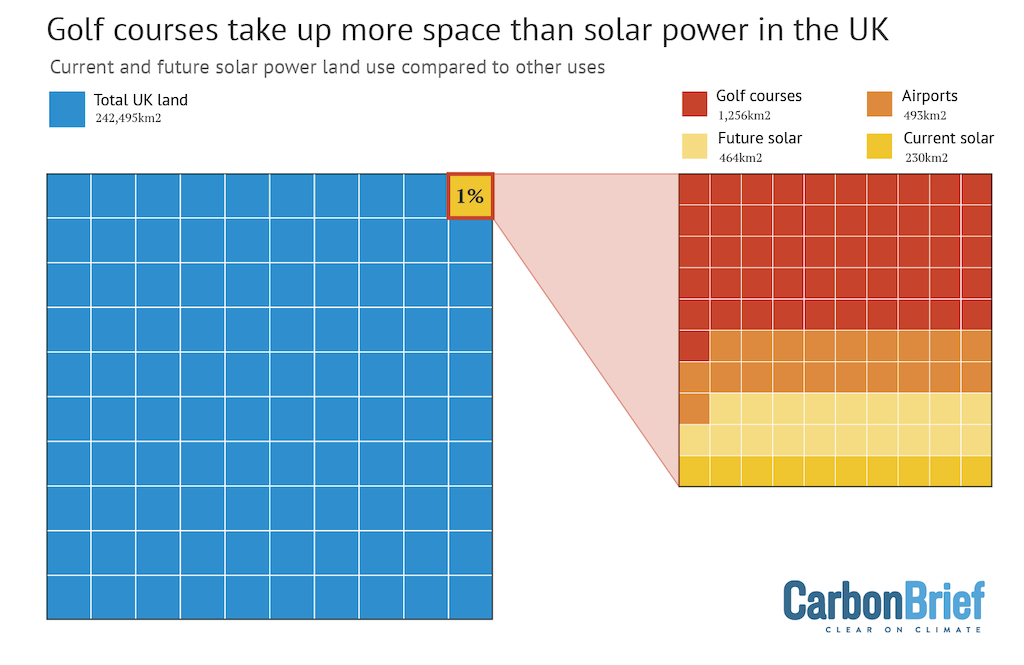Getting planning permission for new UK solar developments can be a long process, made harder by various rounds of consultation.
Ahead of the UK general election, the Green party’s manifesto establishes it ambition to reach 100 GW of solar by 2035. Labour’s manifesto pledges to triple solar power. The Liberal Democrats do not mention a figure but want 90% wind- and solar-generated electricity by 2030.
While a proportion of this can be met with rooftop solar and while manifestos promise to fit all newly built properties with solar panels and other low-carbon technologies, there must be capacity generated from large-scale solar if the UK is to establish the necessary energy generation to move away from relying on oil and gas or other imported energy.
However, public opinion can be fickle when it comes to UK solar farms. Protest groups are increasingly calling on local councils and the government to refuse or revoke planning permission for large-scale solar developments.
The UK Conservative Party manifesto promises to invest in food security and protect the best agricultural land from solar farms. The Association for Renewable Energy and Clean Technology (REA) has pointed out that climate change is the biggest threat to UK food security.
The (solar) farmland question
Solar development and battery storage is rarely built on land classified as the ‘best and most versatile’ (BMV) agricultural land. A recent ministerial statement urged not to permit solar farms on land above grade 3b. According to Solar Energy UK, this was confirmation that existing land use policies would continue to provide stability as the sector expands.
Energy Security Secretary Claire Coutinho said: “We will make sure we reach our solar targets in a sensible way that delivers clean, cheaper energy but does not compromise our food security.”
It is important to contextualise the amount of land actually needed to fulfil solar energy demand. According to Solar Energy UK, approximately six acres of land is required for every megawatt of power for existing projects. With about 9.6GW of UK solar capacity coming from ground-mounted panels, current ground-mounted solar covers an estimated 230 square kilometres.
Carbon Brief data published in August 2022 shows that existing solar farms currently use less UK land than golf courses and airports, which cover 1,256km2 and 493km2, respectively.

Mark Moore, project development and sales director for Iqony SENS, spoke to Solar Power Portal about the objections developers often face when consulting on new solar projects and how developers can ensure they are as responsive to public needs as possible.
He said: “The industry is quite reactive. We are not unresponsive to what’s going on in the environment, we are not unresponsive to the locals.”
SENS UK made an affinity deal with the National Farmers Union Scotland (NFUS) to ensure only a marginal amount of productive farmland is used for solar installations. The organisations will work together to identify locations to develop viable PV and battery sites.
Under the deal, Iqony SENS will own and operate the sites – which will take up land where only limited crops could have been grown – and landowners will receive an indexed, competitive market rent for the land for up to 40 years.
Visual impact and community perception
An issue that consistently arises in public consultations held by solar developers is the visual impact that a solar farm will have. Moore said: “It’s always visual, but it’s sometimes not what they can see.”
He explained that locals often worry about a project’s visibility from major roads that run near their area; misconceptions and negative connotations mean that visible solar developments will cause a negative view of an area.
A major consideration in the planning process is how and where to position the development and foliage around it. British Solar Renewables has been granted planning for three separate projects this year. Two of those were the developer’s second submissions, having initially been rejected and re-submitted with more biodiversity consideration.
Lightsource bp recently held a community information event to share proposals for a 57MW solar and 54MW co-located energy storage installation in the Republic of Ireland. The proposed fields have been chosen partly due to the existing local topography, which will screen the site and limit surrounding views of the solar farm.
It is common for a developer to amend its plans as locals require. A study by Solar Energy UK showed that public acceptance of solar farms is often higher amongst people already living close to one; the real impact of these developments is rarely as monumental as expected.
The report states that development uncertainty naturally leads to doubts, and developers must act responsibly to bring the local community with them. During the development of a solar project, support for solar drops to 17% for people living near solar projects but rises to 61.5% once the sites are operational.
Spurious links to heritage – like a movement to protect ‘Tolkien’s landscape’, so called because his aunt lived near a proposed Roundhill Solar Farm in Worcestershire – are also oft-cited in the case against solar. Rather than representing the British public’s preoccupation with the nature of literature, this indicates the level of unease that a project under development can incite.
The reality is that available connections and environmental conditions have to play a part in decision-making, too. “We would not want to impact on a bonafide landscape that has real scientific or cultural value,” said Moore.
He also highlighted SENS’s practice of establishing an independent bond to pay for restoring the site to its original state when a solar farm is decommissioned.
Biodiversity improves with solar development
In February 2024, the biodiversity net gain requirement mandated in The Environment Act in 2021 came into force.
There is a common idea that solar farms damage biodiversity, but numerous studies have shown the opposite to be true: Moore said that an ongoing study on a SENS development in Warwickshire has shown a 192% biodiversity net gain for the site.
In 2021, field data gathered by Lancaster University from 15 sites showed that pollinators thrived around solar parks, especially those where developers had taken extra care to plant under and around solar panels.
Developers can ensure layout proposals are designed so that most of the open grassland on a site is suitable for small livestock grazing. The relative amount of a solar park taken up by the panels themselves is minor, presenting the opportunity for livestock to graze on solar development sites, a practice known as agrivoltaics.
The solar market is an active barrier against solar developers industrialising swathes of the countryside in the name of corporate greed. Given the amount needed to fit onto the grid and given the amount in the queue, the chances are that, at some point, negative power prices will be required to control the amount of investment in the industry.
Public acceptance of solar developments can be improved with developers’ assurance that a new farm will have a positive impact on local employment, if it affects it at all. In addition, sourcing materials from the UK or at least from Europe is one way that development companies can build public confidence.

